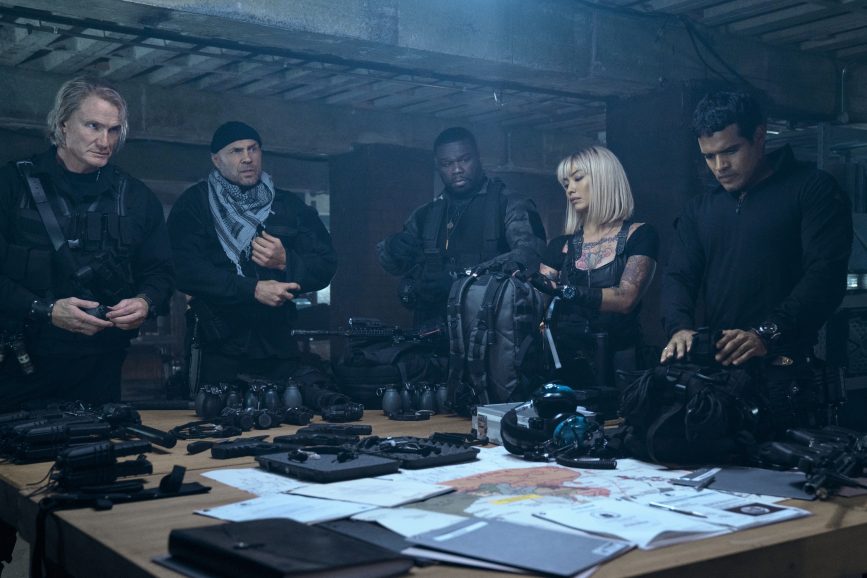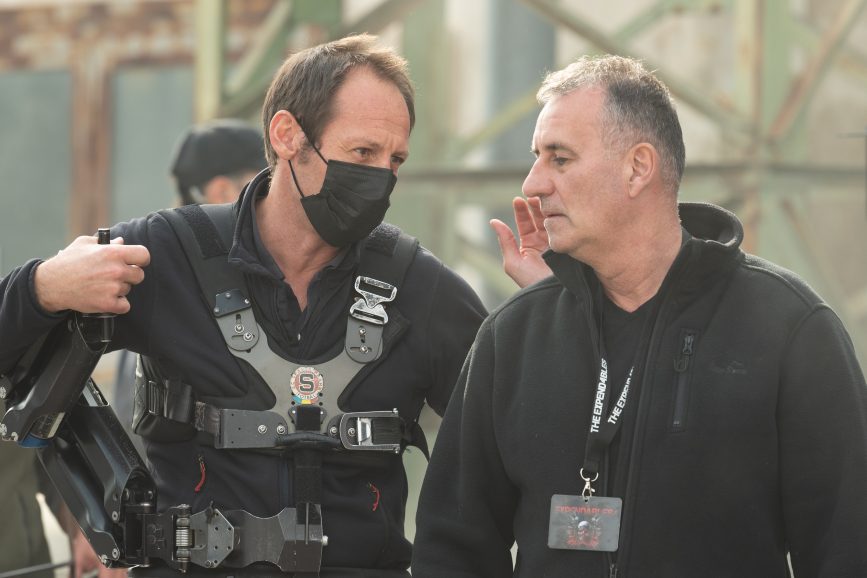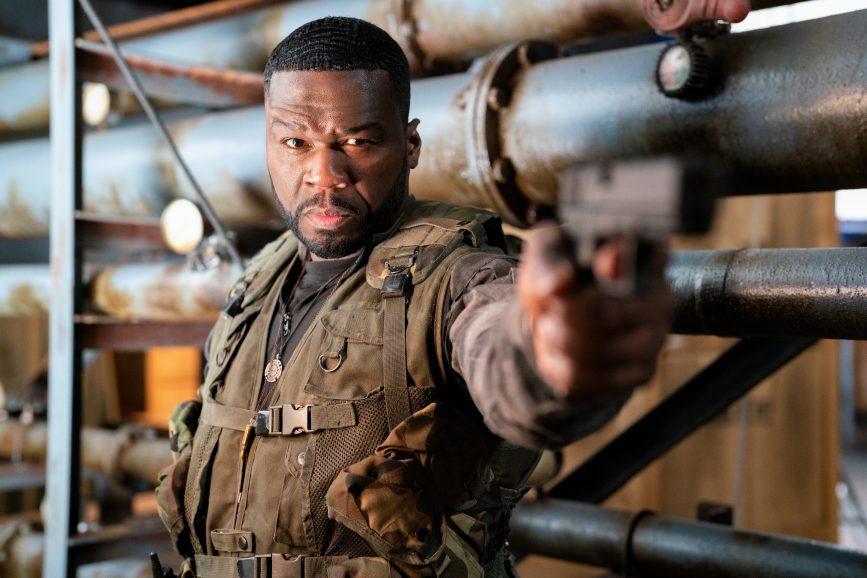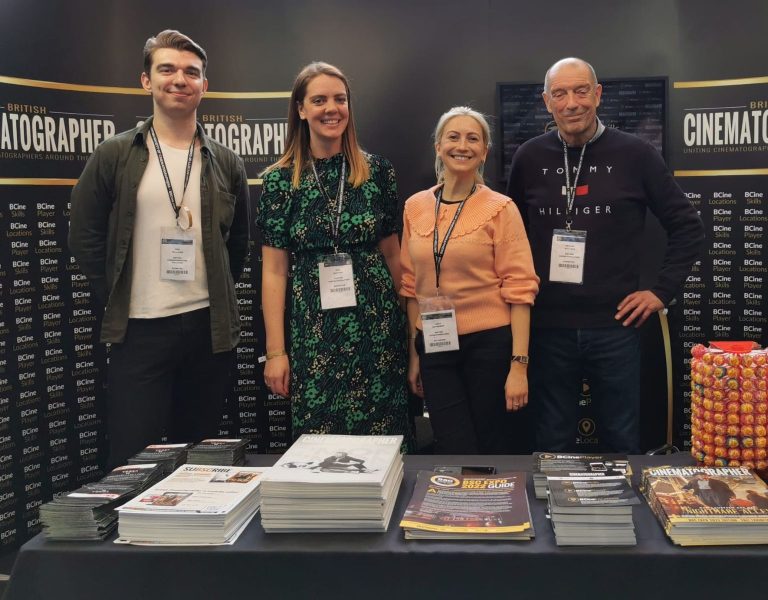Quick change
With a change in crew, Tim Maurice-Jones BSC and director Scott Waugh had to get the large-scale action thriller Expend4bles ready to shoot in less than a month, tackling prep head-on.
With a few weeks to go before principal photography was to begin on Expend4bles, the fourth film in the thriller action series The Expendables starring Sylvester Stallone and Jason Statham, the director and the cinematographer walked off the project.
“I got a call from my agent,” says Tim Maurice-Jones BSC, who first worked with Statham on 1998’s Lock, Stock and Two Smoking Barrels and two years later on Snatch. “He wasn’t sure I would be interested in joining a film of that scale with only three-and-a-half weeks’ prep, but I told him I loved the idea of working with Stallone and company and was sure I could get myself ready in that short space of time.”
The producers knew that Maurice-Jones’ track record with large action movies like Kick-Ass 2, The 355, and Bastille Day put him in a very good position to handle something like Expend4bles, and after one phone call and one meeting, by the time he got back home, he was hired onto the project. Maurice-Jones was to join American director Scott Waugh, who broke out in the action genre with Act of Valor (2012) and Need for Speed (2014).

“He’s an excellent director,” Maurice-Jones says of Waugh whom he hadn’t worked with before. “He brought incredible energy to the project and is a great action director. From our first meeting until the end of principal photography we worked seven days a week with very little sleep.”
It’s no secret that usually, getting hired as a DP onto a project, and especially one of this scale, can be a weeks- or months-long process where you have to go in front of the director and the producers multiple times. But Maurice-Jones remembers the main question from the producers was, “Are you comfortable with walking in late notice to a project of this scale?”
“My response was, ‘Yeah, absolutely, no problem,’” says Maurice-Jones. “Sometimes, when you look at a movie that’s this big, it can be intimidating. But when you break it down and look at it as one scene at a time, the scenes themselves aren’t that complex. And once you step onto that rollercoaster, it takes off and you’re on for the whole ride.”

First things first
Maurice-Jones hadn’t even read the script when he’d accepted the job, so that was his first order of business. After that, since Waugh hadn’t arrived from America yet, he met with the production designer, Ricky Eyres who already had a very good overview of the whole project and knew what sets were already built and what else needed to be done.
Maurice-Jones wanted to tackle what he saw as his biggest challenge: the third act of the film which is set on an aircraft carrier. He had the art department build a model scale deck about 12 feet long and four feet wide. He brought his gaffer in, Martin Cox, whom he also had never worked with before.
“I called all the gaffers I usually work with, and they were all busy and unable to join last minute,” says Maurice-Jones, “I was recommended Martin Cox by one of my other gaffers and he turned out to be brilliant. He was enthusiastic and he had the same energy level as I did.”
They started experimenting on the model-scale ship deck for how to light the boat, and initially, Maurice-Jones thought he would backlight with moonlight. But when he tried that, the superstructure of the ship was causing ugly shadows, so, instead, he tried putting a very soft top moonlight over everything. This meant when they got to the actual set, he needed four 200-foot construction cranes with 40×40-foot light boxes on each. There are about 70 light panels in each box and that gave him the soft base of moonlight over the whole boat that he was after.

They also needed to light the blue screen, which was 200x10m, and he lit that with about 200 Astera tubes. On the deck set he had about 200 practical lights as an addition to the moonlight’s base illumination that would give back edges and little touches to the actors.
The deck was built 140 metres long and 40 metres wide in an outdoor parking lot in Greece and had to be shot against blue screen to double as the open ocean. It was too big to fit in the stages, so they had to shoot exteriors at night since most of the third act takes place at night. They filmed in Bulgaria where the big sets were built like Gaddafi’s desert aircraft hangar and runway scenes. The Bulgarian coast also doubled for the Thailand scenes, but it was overcast when they shot there so Maurice-Jones had Cox bring in banks of 18K HMI lights to bring their own sunshine. London was used for house and bar interiors. And they decided to have the aircraft carrier set built in Greece because it was the middle of winter, and they couldn’t have actors outside for a month of night shoots in Bulgarian temperatures.
“The crew were fantastic and so fast,” he says. “They had that deck built in less than a month.”

Being part of the solution
Once Maurice-Jones felt like he’d solved his biggest problem of the shoot, he and Waugh talked about what the aesthetic of the film should be. Maurice-Jones inherited a camera and lens package of the Sony Venice and Atlas Lens Co. anamorphic set because there was no time to switch anything out. And he was okay with that – “especially if you are coming in late, you want to be a problem solver; you don’t want to be causing problems. I hadn’t worked with either and was initially a bit skeptical, wanting to use vintage anamorphic lenses. But I came to really like the aesthetic of that package. A large percentage of the film was handheld, so I really began to appreciate how lightweight they were.”
Because they didn’t have time to shot-list the entire film and were working with minimal storyboards, which he and Waugh got done in the first week they worked together, Maurice-Jones worked with one thing in mind: “I’m going to get the biggest shot I can for every sequence so we can cut to really huge wides and see scale every time,” he says. “I wanted it to have a big feel.
The time constraints also left little space for diving into visual references or working out a particular aesthetic for Expend4bles. As a workaround, Maurice-Jones decided to move forward with a basic approach that included a lot of practicals and light coming in through windows. He didn’t try to impose a certain colour palette or overall mood.
“I just lit each scene as if it was a stand-alone piece leaning into the light that worked best for that location or mood,” he says. “And that ended up as my visual style.

Bringing post on set
Because it was a VFX and post-production heavy movie – as most action films are, what with all the explosions, jumping out of airplanes, and car chases – Maurice-Jones worked closely with VFX supervisor Veselina Georgieva. For most of the explosions in the film, they weren’t happening with special effects on set, so that required Maurice-Jones to have a lot of interactive light for muzzle flashes, explosions and other bright light sources that would be there in the finished picture.
“You’ve got to remember that when you’re on a film like this, one of your best friends is the VFX supervisor because they’re the ones who are going to set the look of the film in the end,” he says.
In the end, Maurice-Jones credits Waugh with much of the success of being able to get Expend4bles off the ground in three-and-a-half weeks.
“From the first day of prep to the last day of shooting he was at 100 percent all the time,” he says. “So you have to be on your game to keep up with him. Scott had some very good instincts for the shots, and sometimes he’d let me do whatever I wanted, but other times he’d tell me exactly what he wanted. Between the two of us, we dragged the film out and pushed it forward and forward. With a little more time it might have been a slightly different film. But I think what we did in the time we had was what we needed to do. I’m pretty happy with the look because it looks like a big action movie.”


















